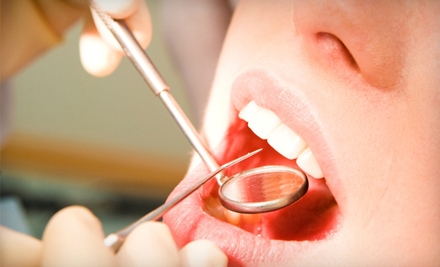 The hygienist plays an intricate role in your oral health care. At a minimum the role includes periodontal disease evaluation, taking x-rays and a patient’s periodontal charting. Traditionally, they engaged in cleaning and flossing the teeth under the theory that at healthy mouth was primarily necessary for the patient to keep their teeth. While this is still the case, discoveries in the last decade have uncovered the correlation between periodontal disease and other health related issues such as diabetes, Alzheimer’s, cardiovascular disease, pregnancy related problems that assigns new priorities to the role of the hygienist and your dental visits. These correlations have caused a new focus on evaluating a dental patient and new signals related to their overall health. “The American Academy of Periodontology seeks to educate the public about research findings which support what dental professionals have long suspected: Infections in the mouth can play havoc elsewhere in the body. For a long time it was thought that bacteria was the factor that linked periodontal disease to other infections in the body; however, more recent research demonstrates that inflammation may link periodontal disease to other chronic conditions. Research has shown, and experts agree, that there is an association between periodontal diseases and other chronic inflammatory conditions, such as diabetes, cardiovascular disease and Alzheimer’s disease. Therefore, treating inflammation may not only help manage periodontal diseases but may also help with the management of other chronic inflammatory conditions.” [1]
The hygienist plays an intricate role in your oral health care. At a minimum the role includes periodontal disease evaluation, taking x-rays and a patient’s periodontal charting. Traditionally, they engaged in cleaning and flossing the teeth under the theory that at healthy mouth was primarily necessary for the patient to keep their teeth. While this is still the case, discoveries in the last decade have uncovered the correlation between periodontal disease and other health related issues such as diabetes, Alzheimer’s, cardiovascular disease, pregnancy related problems that assigns new priorities to the role of the hygienist and your dental visits. These correlations have caused a new focus on evaluating a dental patient and new signals related to their overall health. “The American Academy of Periodontology seeks to educate the public about research findings which support what dental professionals have long suspected: Infections in the mouth can play havoc elsewhere in the body. For a long time it was thought that bacteria was the factor that linked periodontal disease to other infections in the body; however, more recent research demonstrates that inflammation may link periodontal disease to other chronic conditions. Research has shown, and experts agree, that there is an association between periodontal diseases and other chronic inflammatory conditions, such as diabetes, cardiovascular disease and Alzheimer’s disease. Therefore, treating inflammation may not only help manage periodontal diseases but may also help with the management of other chronic inflammatory conditions.” [1]
The U.S. Surgeon General agrees that oral health is a strong indicator of one’s overall health and well-being.[2] Often, diseases give their first warning signs in the form of a patient’s oral problems. Without consistent care and monitoring, several oral health problems can result. Immediate risks include gingivitis, cavities, tooth decay, and other gum diseases which can eventually result in various types oral cancer. There is a “silent epidemic”[3] that can be avoided by regular treatment at home and dental visits at least twice each year. While practicing good oral hygiene at home is vital to your health, there is only so much that personal oral maintenance can do. A normal person can easily overlook conditions that could greatly complicate or even end one’s life. Thus, visiting your dentist for regular checkups is vital to a healthier smile.
“Routine dental exams uncover problems that can be easily treated in the early stages, when damage is minimal”.[4] Now that it is known that gum disease can be a major risk factor for heart disease, stroke, and certain forms of cancer, regular visits to your dentist can help prevent and treat this disease. By treating conditions early and learning from our dentist how to prevent oral diseases, you can achieve better health and ultimately better quality years of life.
Novy Scheinfeld, DDS, PC
ZoAnna Scheinfeld, MS, DMD
Hanna Orland, DMD
290 Carpenter Drive, 200A
Atlanta (Sandy Springs), GA 30328
404-256-3620
info@rightsmilecenter.com
Serving residents in East Cobb, Roswell, Alpharetta, Johns Creek, Dunwoody, Buckhead and surrounding communities.
Related Articles
- Dentist Sandy Springs – Older patients have special dental needs (therightsmile.wordpress.com)
- Oral Health Care of Our Aging Population (therightsmile.wordpress.com)
- 8 Windows Dentistry Opens to your Overall Health (therightsmile.wordpress.com)
- Dentist Sandy Springs – 4 Steps to Promoting Good Oral Health (therightsmile.wordpress.com)

